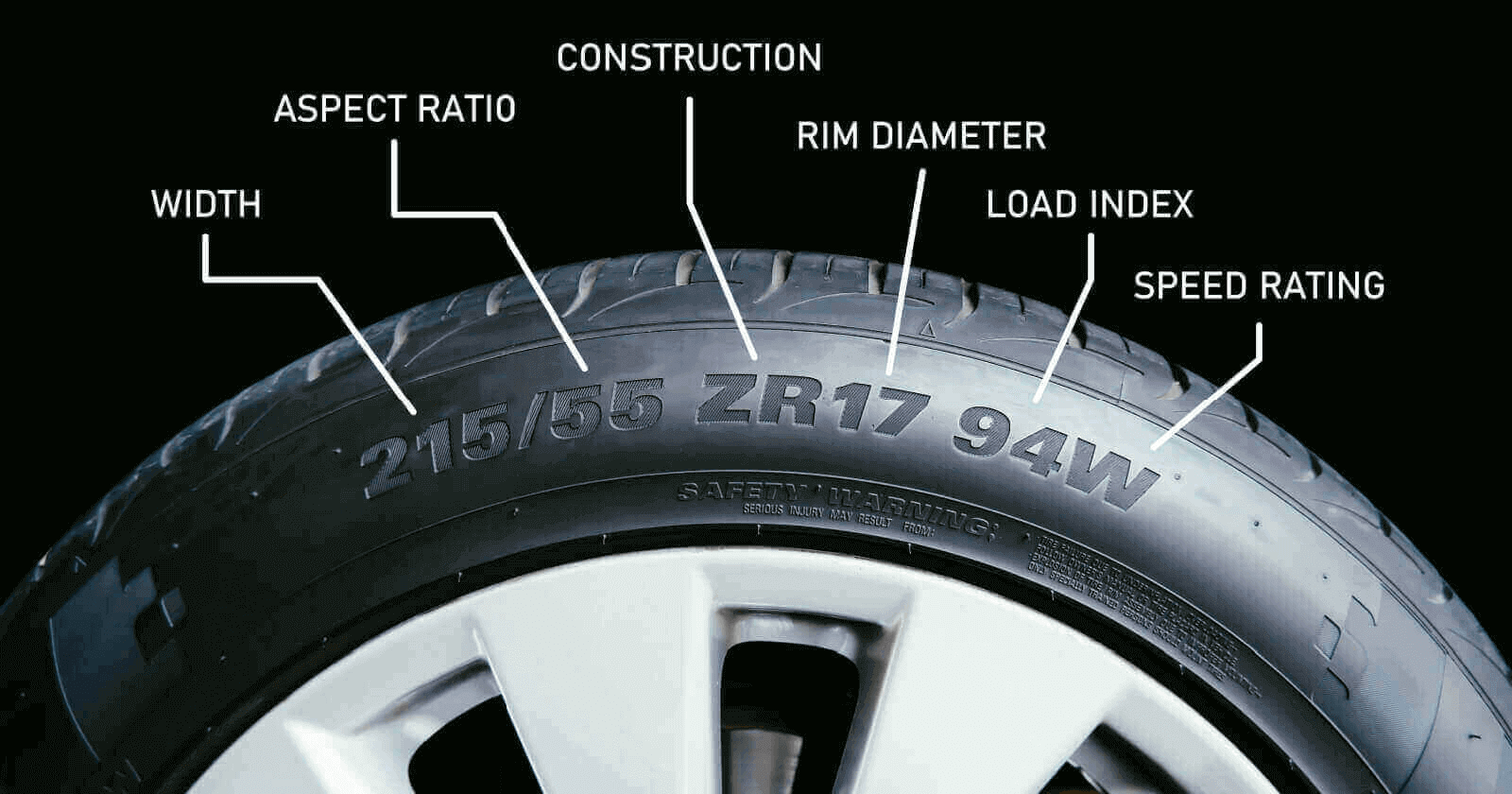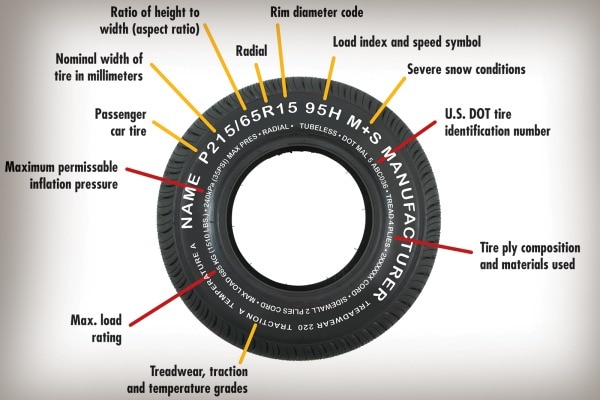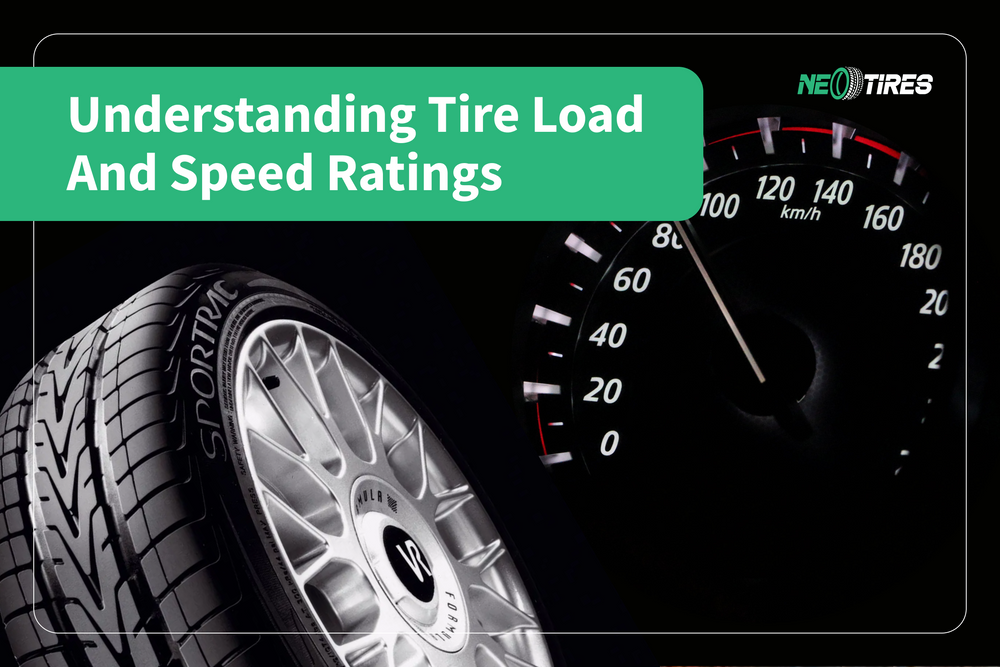Top 10 Insights on Tire Speed Rating Chart
Explore the top 10 essential insights about tire speed rating charts to ensure your vehicle's optimum performance.

Understanding the speed rating chart for tires is crucial for ensuring your vehicle's performance and safety. This chart isn't just a random mix of letters and numbers; it's a detailed guide that tells you the maximum speed your tires can safely handle. Whether you're a seasoned driver or just starting out, knowing how to read this chart can make a significant difference in your driving experience. Let's dive into the top 10 insights you must know about tire speed rating charts to keep your ride smooth and safe.
Understanding the Speed Rating Chart for Tires
Before we delve into the specifics, it's important to grasp what a tire speed rating is. Simply put, it's the maximum speed a tire can handle before it possibly fails. This rating is determined through controlled tests, where tires are run at faster speeds until their threshold is found. The result is then categorized into ratings, each represented by a letter. This doesn't mean you should drive at these maximum speeds, but it serves as a crucial guideline for matching tires to your vehicle's capability.
List of Top Choices
- What is Tire Speed Rating?
- How is Tire Speed Rating Determined?
- Importance of Following Tire Speed Ratings
- How to Read the Tire Speed Rating Chart
- Differences Between Speed Ratings
- Impact on Vehicle Performance
- Selecting the Right Tire Speed Rating for Your Vehicle
- Common Misconceptions About Tire Speed Ratings
- Tire Speed Rating and Fuel Efficiency
- Upgrading or Downgrading Tire Speed Ratings
What is Tire Speed Rating?

- Definition: A measure of the maximum speed a tire can safely maintain.
- Purpose: Ensures compatibility with the vehicle's performance capabilities.
- Representation: Usually denoted by a letter, e.g., T, H, or V.
Tire speed rating might seem like a small detail, but it plays a huge role in your vehicle's safety and performance. Each rating, represented by a specific letter, relates to a maximum speed the tire can safely sustain. This isn't about pushing your car to its limits on a daily basis but ensuring that your tires can handle the maximum speeds of which your vehicle is capable. Choosing a tire with the correct speed rating is crucial for maintaining your vehicle's integrity and your safety on the road.
How is Tire Speed Rating Determined?
- Controlled Tests: Conducted in a safe, monitored environment.
- Increasing Speeds: Tires are tested at gradually increasing speeds until they reach their failure point.
- Standardization: Ratings are determined based on performance under these specific conditions.
The method behind determining a tire's speed rating isn't simple. In controlled environments, tires are subjected to tests where they're rotated at increasing speeds until they can no longer maintain their structure or performance. This rigorous process ensures that each tire rating accurately reflects a tire's ability to perform under high-speed conditions. Understanding this process helps drivers trust the ratings system, knowing it's based on thorough testing and standardization.
Importance of Following Tire Speed Ratings
- Safety: Reduces the risk of tire failure and accidents.
- Vehicle Performance: Ensures tires can handle the designed speeds of the vehicle.
- Warranty and Insurance: Compliance often required by manufacturers and insurance policies.
Ignoring tire speed ratings is a risk that's not worth taking. Adhering to these ratings is paramount for safety, as overloading tires beyond their rated capacity significantly increases the risk of tire failure and, consequently, accidents. Besides safety, there's a performance angle to consider. Using tires that meet your vehicle's recommended speed rating will optimize its performance and even comply with warranty and insurance requirements. In short, following these ratings is an integral part of responsible vehicle maintenance and ownership.
How to Read the Tire Speed Rating Chart

- Location: Found in the tire sidewall markings and vehicle's manual.
- Understanding Ratings: Each letter corresponds to a maximum speed.
- Matching Vehicle Specs: Ensure the rating matches or exceeds the vehicle's maximum speed.
Reading the tire speed rating chart correctly is essential for selecting the right tires for your vehicle. The chart is straightforward once you understand it; each letter rating corresponds to a specific maximum speed. For example, a "T" rating indicates a tire can safely handle speeds up to 118 mph. This information is usually found on the tire’s sidewall and in the vehicle's manual, helping you match your tires to your vehicle's speed capabilities. Choosing a tire that matches or exceeds your vehicle's top speed is key to maintaining safety and performance.
Differences Between Speed Ratings
- Performance Range: Higher ratings mean higher safe speed limits.
- Applications: Certain ratings are better suited for specific vehicle types or driving conditions.
- Cost Implications: Generally, higher-rated tires might come at a higher cost.
Understanding the nuances between different speed ratings can significantly affect your driving experience. Speed ratings range from "L," which is the lowest and suitable for off-road and light trucks, to "Y" and beyond for high-performance sports cars. These ratings not only indicate the safe operating speed of the tire but also hint at the agility and handling you can expect from them. For instance, tires with a "V" rating are capable of handling speeds up to 149 mph, and are typically designed for performance vehicles. These distinctions are important because they impact your vehicle's handling, comfort, and even fuel efficiency. So, when choosing tires, consider not just the speed but also the overall performance they are designed to provide.
Impact on Vehicle Performance
- Handling: Optimal speed ratings enhance maneuverability and response at high speeds.
- Comfort: Appropriate ratings can reduce noise and improve ride smoothness.
- Safety: Proper ratings ensure tires can withstand the speed and weight of the vehicle.
The impact of tire speed ratings on vehicle performance cannot be understated. Choosing tires with the appropriate speed rating for your vehicle enhances its maneuverability and response, especially at higher speeds where control is paramount. Additionally, tires with a speed rating that matches the vehicle's capabilities tend to offer a smoother, quieter ride, enhancing overall driving comfort. Most importantly, the right speed rating is crucial for safety, ensuring that tires can safely handle the combination of speed and the vehicle's weight under various driving conditions.
Selecting the Right Tire Speed Rating for Your Vehicle

- Vehicle Specifications: Align with manufacturer's recommendations.
- Driving Needs: Consider your typical driving conditions and speeds.
- Safety Margin: Choose a rating that provides a safety cushion above your usual driving speeds.
Selecting the right tire speed rating is not just about following manufacturer's recommendations—it's about aligning those recommendations with your specific driving needs and providing a safety margin. Always consult your vehicle’s manual to understand the minimum tire speed rating requirement. Consider the typical driving conditions you face, including whether you drive on highways or in urban settings, and select a tire that not only meets but exceeds your usual demands. This approach ensures that your vehicle operates safely, efficiently, and optimally, regardless of driving conditions.
Common Misconceptions About Tire Speed Ratings
- "Higher is always better": Not always necessary for all driving conditions.
- "Only affects speed": Also influences handling, wear, and fuel efficiency.
- "All tires for a vehicle have the same rating": Can vary based on tire model and brand.
Several misconceptions surround tire speed ratings. First, while higher ratings indicate a tire can handle higher speeds, they aren't always necessary for everyday driving conditions and can come at a higher cost. Secondly, speed ratings affect more than just the speed; they influence how a tire handles, its durability, and even the vehicle's fuel efficiency. Lastly, not all tires designed for a particular vehicle have the same speed rating. Ratings can vary based on the tire model and brand, highlighting the importance of checking the rating when purchasing new tires.
Tire Speed Rating and Fuel Efficiency
- Rolling Resistance: Higher-rated tires may offer lower rolling resistance.
- Weight: High-speed-rated tires are often lighter, contributing to better fuel economy.
- Design: Aerodynamics and tread design can impact fuel efficiency.
The relationship between tire speed ratings and fuel efficiency is more nuanced than it appears. High-speed-rated tires often have lower rolling resistance and are lighter, which can positively impact fuel economy. The design features that allow these tires to perform at higher speeds, including improved aerodynamics and specialized tread designs, also contribute to reduced fuel consumption. However, it's essential to balance the desire for efficiency with your actual speed and performance needs, as the highest-rated tires may not be necessary for your typical driving patterns.
Upgrading or Downgrading Tire Speed Ratings

- Upgrading Benefits: Improved handling and stability at higher speeds.
- Downgrading Risks: Reduced handling capabilities and potential safety hazards.
- Manufacturer Approval: Ensure any changes are in line with vehicle specifications.
Upgrading or downgrading tire speed ratings should be done with careful consideration of the benefits and risks. Upgrading can offer improved handling and stability, especially at higher speeds, which might be beneficial for drivers who frequently travel on highways. However, downgrading comes with risks, including diminished handling capabilities and potential safety hazards, as the tires may not be capable of supporting the vehicle at higher speeds. Always consult the vehicle manufacturer or a professional before making any changes to ensure that they align with vehicle specifications and do not compromise safety.
In conclusion, understanding tire speed ratings is essential for ensuring your vehicle's safety, performance, and efficiency. By selecting the right tires for your driving needs and ensuring they meet or exceed the recommended ratings for your vehicle, you can enjoy a smoother, safer driving experience. Always keep in mind the importance of these ratings, and do not hesitate to consult professionals when in doubt.
What's Your Reaction?










































































